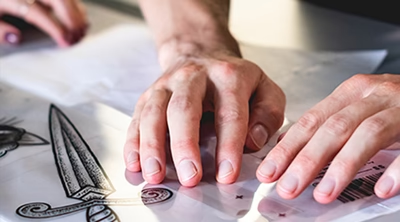How to Create Your Own Plastisol Heat Transfers
Screen-printed heat transfers are a process for designing the prints on the fabrics in different requirements, such as printing hats, neck labels, names for sports apparel, and more. It uses to print onto a release paper or film with special ink first, and it has then adhered to the final substrate with a heat press. With screen print transfers printer techniques, many different fabrics can be used, including cotton, poly/cotton blends, and nonwoven fabrics.
Let's go over the fundamental elements and steps involved in creating your own heat transfers using screen printing.
Steps to Make Your Own Plastisol Transfers
Transfer Paper
At first, it is required to dry the transfer paper with the use of a conveyor dryer; this process is mandated since the paper absorbs moisture from the air, and without drying, it can result in moisture interfering with the ink. It is also essential that the paper doesn't get too hot; otherwise, ripples can be formed. While for multicolour heat transfers, a flat, stable transfer paper is required.
Printing
On the screen, it is suitable to give a light push, and if you push too hard, the ink will seep out the sides of the stencil. It would help if you gave a measurable pressure to pass the ink through the screen while maintaining sharp, clean edges on the print.
It is suggested to avoid using a very tall stencil that may result from the ink getting smashed when its heat pressed. You'll need to experiment in order to manage the ink deposit. Play around with the screen's mesh count and coating thickness.
Adhesion Powder
The heat transfers are coated with the adhesion powder, and to use it, you will need a container to hold the powder, a plastic storage box, for example.
Fill out the container with adhesion powder in great quantity. Dip the paper into the box, then sprinkle the ink several times with the powder. Flick the paper to remove any remaining powder after completely covering it.
Gelling the Ink
Here, it is suggested you on conveyor dryers in comparison with flash dryers. When using a flash dryer, you lack control over the heat zone; it gets significantly hotter in the middle with reference to the outer edges. Given that the central portion is much hotter, the ink there will achieve gel temperature considerably more rapidly than the other portions.
The middle could reach cure temperature while we wait for the edges to reach gel temperature. The ideal method for gelling heat transfers is a conveyor dryer.
Heat Pressing
When setting a heat press, you can set a temperature around 350°F with a four or five pressure. Depending on the type of transfer paper, adhesion powder, and heat press you're using, the settings will change. To find the most effective approach, perform a wash test.
Final Verdict
We sincerely hope that this post has provided you with the necessary information regarding "How to Create Your Own Plastisol Heat Transfers." Give printing on your own a shot. Happy printing!



.jfif)
Comments
Post a Comment